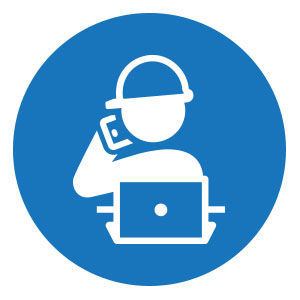
Next Video: Communication Tool 5: Contracts and Agreements
Most disasters, unnecessary headaches and unforeseen budget blowouts can all come down to the failure of one pretty crucial tool in your Building Project.
So what is this crucial tool? Well, it’s Communication.
G’day, I’m Mitch from Next Gen Building and over this next few minutes we’re going to talk about some pretty good tools that we can bring into our next Building Project that are going to improve our effectiveness especially when it comes to the Communication side of things, to assist us in having a better experience in our Project.
Over the last three videos we’ve already done, we’ve spoken about some really important tools but this video is going to introduce another four. I’m going to break those four down and they are going to really compliment the last three we have already discussed. If you’re not really sure what I am talking about, feel free to click back in your own time and check out the other three videos. They’re really worth getting into because they do highlight some pretty important things that you should be looking out for when you start your next Project.
1. How you go about seeking your quotes or estimates
Remember you should be very clear at this stage because when you introduce assumptions into your brief that can lead to Communication issues which can in turn lead to unwanted surprises, headaches, confusion, budget blow out and it all stems from assumptions. Be very vigilant on removing as may assumptions as you can out of your brief.
2. When you’re seeking your quotes or estimates, put what you want in writing.
Scope it up in as much detail as you can and this would be a really good time where you can use those professionally developed plans and specifications, that we discussed in the last video, because it’s an important tool that can go towards putting together a really clear scope of works and again minimising assumptions.
3. Describing the finished result is a really good way to describe your scope of work
Be careful though that you don’t try and tell people that are working on the Project with you i.e. your Team how to do their job because that could be a missed opportunity for them, to have input into the Project based on their experience, where they could suggest things that might actually improve the outcome or make the Project more efficient or give you a better overall finish than what you’re actually looking for.
Be careful to work with your Team Members.
4. When you receive your quote or estimate MAKE SURE it is in writing.
Don’t have a handshake agreement and when you give the go ahead on your quote or estimate, again MAKE SURE that it’s in writing. It is so crucial that there’s an accurate record kept between Yourself and Whoever you are working with.
Remember to get it in writing as People tend to forget when it’s convenient. Keep records for yourself, any phone calls. Another option is to cc the person you were talking to on the phone in an email “Hey, listen, thanks for the chat” describe what you spoke about “have a great day!” send it off. It’s in writing, it’s there forever.
I think that covers the four extra tools that we covered in this video. We’re going to crack out another video next week which will be the fifth in the series. If you would like any more information on this video or any of the other three that we’ve done, drop a comment below and I’ll try and get back to you as quickly as I can but in the meantime – thanks for listening, have a great day, Thank you.
Next Video: Communication Tool 5: Contracts and Agreements
« Return to 7 Essential Project Communication Tools: Video Series